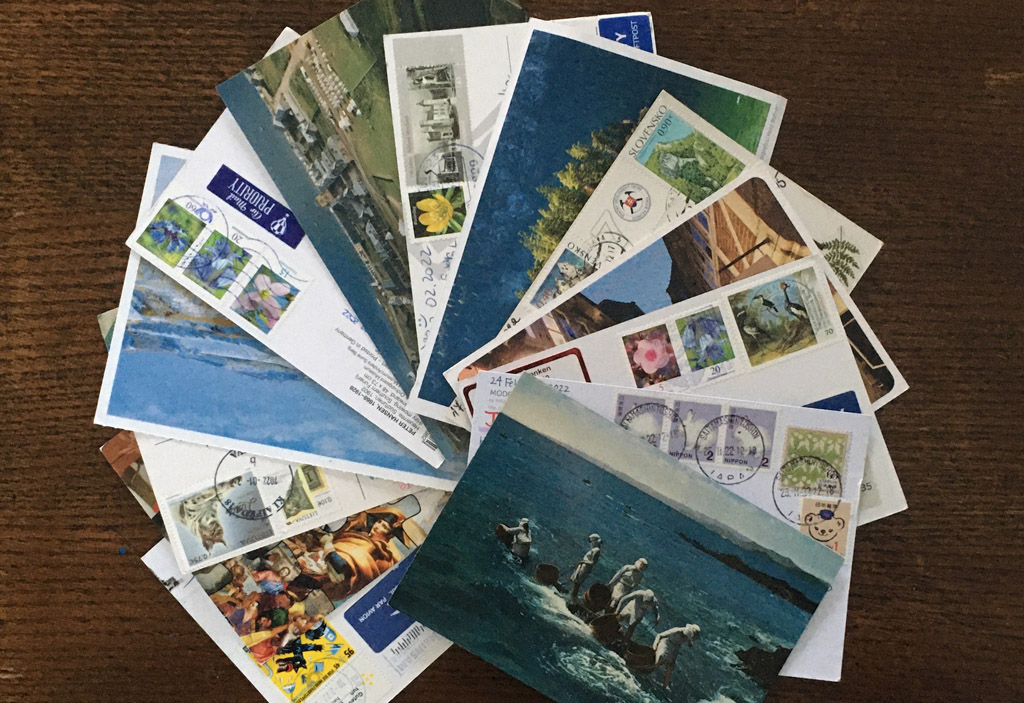“A postcard makes both the sender and the recipient happy.”
– Posti
What is a postcard, and what is it for?
Consider this assessment, offered by Posti, the national postal service of Finland:
“A real postcard will please the addressee in a special way in the era of electronic communications. A postcard shows the addressee that the sender has been thinking about him/her. The postcard may have been chosen especially for the addressee or its stamp may fit in a special theme. Many people even make postcards themselves. A postcard remains visible longer than an electronic message, and so do the warm thoughts conveyed with it. A postcard makes both the sender and the recipient happy.”
From https://www.posti.fi/en/private/letters-and-mail/send-a-letter-or-postcard/post-card
This disarmingly sincere accounting of the qualities of the humble postcard, for which the adorably-named Posti stands ready to sell Postage, is also a canny recognition of a widely felt insecurity about the future of postal mail in a digital world.
Despite the ongoing decline of what many disparagingly refer to as “snail mail,” there remains a segment of the population that has not yet lost touch with its unique qualities, and fears the prospect of losing this supposedly archaic medium forever.
In fact, the status of the endangered postal card, and perhaps of snail mail itself, embodies just one facet of a largely unexamined trend: the quiet loss of useful functions of familiar, time-honored technologies, as they become weakened and displaced by innovations that fail to recognize and support them.
Word from afar
A century ago, when the postcard was at its peak popularity, it was a symbol of travel — and more generally, of separation. Either condition imposed a barrier to communication between people who were once together. The postcard was the cheapest way to breach it.
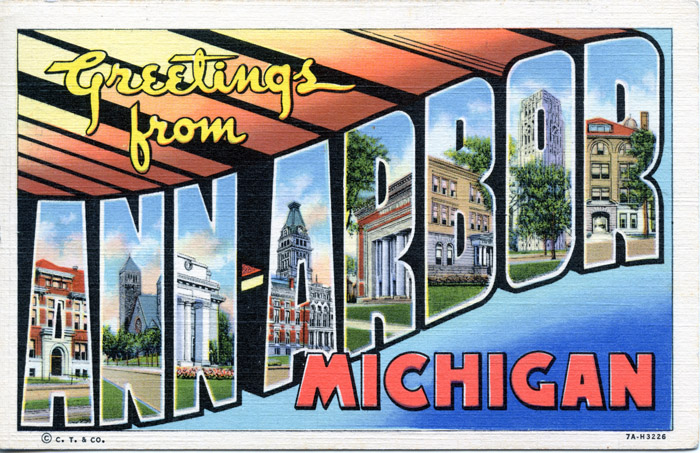
Although many of us have never sent or received one, today we all know the postcard as a sort of cliché, albeit in physical form. “Send a postcard when you get there” is a phrase that could equally accompany a warm farewell to a lovely destination, or a mocking riddance to a poor one. In either case, it almost never really means that an actual postcard is expected. As a communication medium, the postcard has not only left the station, but seems well on its way to move on from snide cliché to murky idiom, its literal meaning lost.
In the U.S., the postage rate for a postcard is still substantially cheaper than for a letter — a fact that is probably based more in tradition than in the cost of handling. In fact, the format and addressing scheme of the postcard are a throwback to earlier times, and present a challenge to modern postal automation. Yet the post office has resisted charging more to make up for this difficulty — perhaps because there are so few postcards in the mail stream, that it’s hardly worth the bother.
Hanging by a thread
Today, and for much of the last century, one could, of course, send word via telephone, telegram, or email, rather than going to the trouble of finding, writing, addressing, stamping, and mailing a postcard — which may not even deliver its message until several days or weeks later. Yet the postcard has continued to hang on. What hidden functions are keeping it alive, and where will they go when the postcard disappears?
A postcard certainly has some useful non-communicational features. When traveling, I regularly send postcards to myself from overseas, and to friends who like them. Clearly, when I am both the traveler and the recipient, communication cannot be the purpose. Apparently, I am seeking something else entirely, that only a postcard can provide. What is it? I don’t claim to be completely in touch with my motivations, but I think it is to provide a certain sort of tangible memento of a journey to a distant land — one that is linked by the picture, the postmark, the stamps, and the address. On top of that, having this physical item posted on my fridge proves to my home-bound self that I was really there — importantly, at random moments and junctures that would not otherwise conjure the memory.
I must have already been tuning in to Posti’s observation that:
“A postcard remains visible longer than an electronic message.”
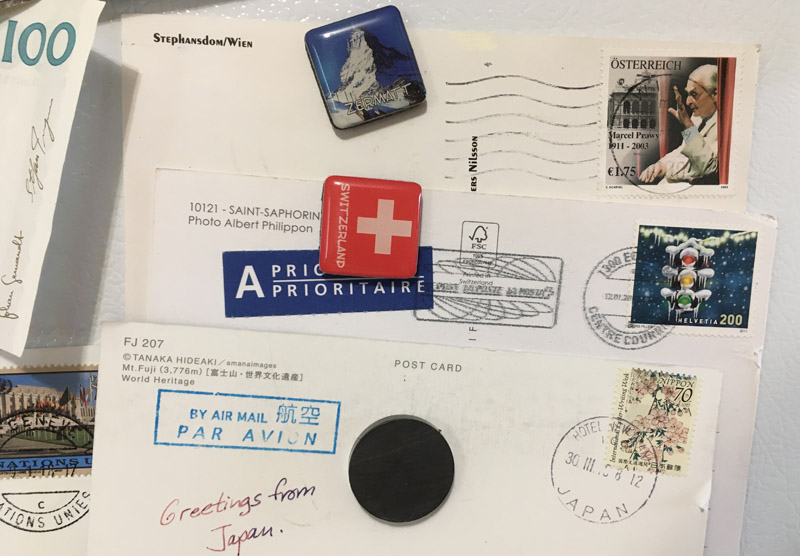
But this reasoning doesn’t account for my decision to send postcards to friends, which could only be understood as a communicational gesture. Apparently, I was pursuing some communicational function that an email, text, or phone call could not provide. Perhaps it was an example of Posti’s assertion that:
“A real postcard will please the addressee in a special way in the era of electronic communications.”
Yes, that was true of the specific friends whom I chose to grace with the attention of a postcard. Posti seems to be on to something.
All of this suggests that the postcard, as a communication medium, has some important features and functions that are not supported by our modern digital options.
This is a precarious situation. It means that if the postcard is lost as a viable medium, the unique functions that it supports may be lost as well. Let’s see if we can identify some of those functions.
Not yet obsolete
Postcards are already considered a throwback, an anachronism; an old-school gesture that is almost subversive in its extreme inefficiency. Postcards are the slow food of correspondence; they are notable as much by their impracticality as by the pleasures they bring.
Of course, the various digital media that we have today can all arguably accomplish the same superficial communicational purpose: to transmit symbols of communication. Yet they all continue to coexist with one another, and with the postcard. Each persists because each is imperfect as a replacement for any other, but is very effective as an alternative. Each possesses a unique set of strengths and weaknesses that make it the best fit for some specific subset of communicational purposes. One size does not fit all.
If the postcard disappears, what will become of its strengths? Will we find them again among the strengths of the modern media that survive it, or will we be left to cobble together an imperfect substitute from among their many weaknesses?
Thus it is important to consider what a postcard is “for” — in other words, the unique functions that it serves, that we are poised to lose to other technologies that are not equipped to provide them.
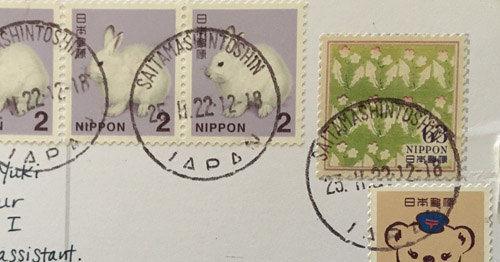
The medium is the message
If a postcard is a communication medium, then to ask what a postcard is “for,” is to ask what it “says.”
Let’s first consider the perspective of the sender. When travel is the occasion, the traveler is always the sender. That is, a postcard typically transmits news of traveling, not news of remaining. It would be odd indeed for a person at home to send a postcard to a traveler! Thus we might say, in the context of travel at least, that a postcard possesses a certain unidirectional feature that is not present in an email, letter, or phone call.
This unidirectional feature carries information. Regardless of what is written on the card, when a postcard is sent by a traveler, the very act communicates a basic message that is woven indelibly into the medium and the circumstances. At the highest level, it says, “I am here, and you are still there.” At another level, it continues, “My surroundings are now different from yours, and I want you to know something about it.” And finally, it says, “I arrived safely here, and everything is fine because I had time to find a card, find a stamp, find a postbox, and write this postcard to you.” After that, the specifics of the written message take over. But it is on this unspoken substrate that the written message is carried, and understood.
But can’t these unspoken messages be transmitted just as well by email or telephone? Well, yes and no. Although they represent important information to the receiver, they are the sort of messages that go without saying. Email and telephone, not having a default unidirectional quality in this context, and not being strongly associated with travel, do not by default carry these messages. An email received from a traveler looks no different from an email received from the same person previously. The recipient would first have to connect the timing of the email with prior knowledge of the sender’s trip, in order for the email to represent the same unspoken messages. Even then, sending an email is usually much easier than performing the many manual steps of mailing a postcard — and so it doesn’t automatically say as much about the traveler’s comfort and condition. One could perhaps send a cheery “I’ve arrived” email from a smartphone while being detained in a holding cell at Customs and Immigration, but a postcard suggests that this is not the case.
Brevity rules
Having these messages contained directly in the medium is helpful — because a postcard doesn’t provide room for much more. Like a tweet, a postcard message must be brief and concise. As a result, compared to the messages already carried within the medium, the written message can be short and trivial. Not only was much already said without saying, but saying more is limited by the space available. By contrast, to send an email or make a phone call with a message equally brief might come across as terse, dismissive or insulting. But a postcard gets away with it. Brevity is in its nature, and we know that.

Privacy is overrated
Certainly, the back of a postcard is not the place for anything lengthy — nor for anything private. Lacking the cover of an envelope, a postcard is decidedly non-private. Might this be a feature, and not a bug?
Although postcards have popularly been associated with travel, they have also been used as a less costly, and less formal, alternative to a sealed letter. Part of that informality is embodied in the visibility of the message.
As a child, I would often retrieve the family’s mail. Once, there was a postcard addressed to an uncle who was living with us at the time. There was a message on the back, from another relative who was living afar. Naturally, as I walked back to the house, I read it. As I dropped the stack of mail on the kitchen table, I told my parents of the interesting news I had learned. My mother asked, “Oh really? How do you know that?” And I said that it was right there on my uncle’s postcard. After she noted that my uncle was not at home, and thus could not have read his mail yet, I received a gentle but firm lesson in the fact that just because I was able to read his card, it didn’t mean that I should have.
To be fair, this was at a time not long after I had learned to read, and I was eager to exercise the power of this new skill wherever possible. So I was a bit surprised to learn that despite the fact that the message was in plain view, I was expected to practice a measure of restraint. Just as a spoken conversation remains personal even if it is audible to others nearby, the postcard carries the same consideration. The boundary between overhearing and eavesdropping, and between seeing and snooping, continues to be policed by our own conscience.
A postcard thus represents a halfway point to a private letter – still personal, but more casual, and not as private. Although its message might be delicate, it is unlikely to contain anything that must be concealed from curious eyes.
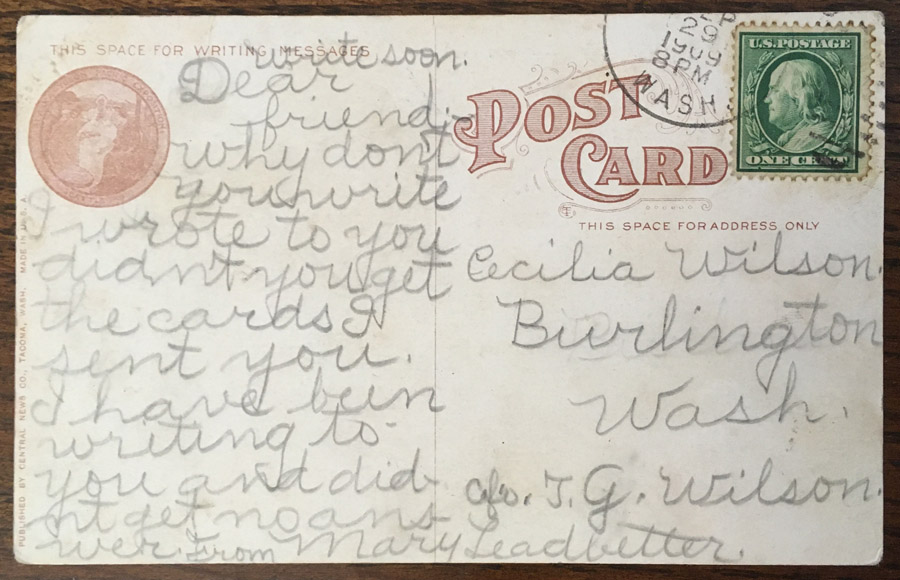
Absence of secrecy
But is this a useful thing? Yes. By deliberately leaving itself open to inspection, a postcard communicates to everyone, at a meta-level, that there is nothing secret in its content. The absence of secrecy can be an important message in itself. Nothing to see here, folks, move along.
For example, I have heard that long ago, in feudal times when public roads were spotty and long trips might involve crossing many privately-owned fields and glens, a traveling party might carry makeshift drums and horns so that they could be noisily beaten and blared when traversing across an estate. This would demonstrate to the lord of the manor, from a distance, that the trespass is innocent — because it is obviously not secretive.
Similarly, affairs of public interest, such as city council meetings, estate settlements, and foreclosure auctions are often advertised rather obscurely in newspapers or on public notice boards at the local courthouse. While this is not very effective at dispersing the information to the widest possible audience, that’s not the point. The primary purpose is to prove to the public that the proceedings are demonstrably not secret. Those who most need to know — the attorneys and the activists — know where to look.
In very much the same way, a postcard, in declining the concealment of an envelope, indicates the absence of secrecy — without, exactly, declaring itself public. The choice of a postcard over a sealed letter thus carries an unspoken message to those who may observe it being sent or received: that this act of correspondence, alone, cannot be evidence of something more significant or sinister than an ordinary conversation. It seems to say, “If you really want to, you can read it — but then you’ll be eavesdropping.”
A tale of a journey
From the point of view of postal regulations, a postcard is simply a piece of paper cardstock of an appropriate size and weight that has been marked and stamped for sending through the mail. Facing a tortuous itinerary, this simple piece of cardstock comprises a surprisingly rich medium, its two sides providing plenty of real estate for the collection of verbal and visual interest.
At minimum, one side must include the address and the stamp. This side will also collect most of the postal markings that it obtains on its journey. Together, they convey a story greater than the sum of its parts.
For example, we can see that the card below was hand-cut from a random piece of cardstock and was mailed to a manufacturer in Washington to request a recipe booklet. But the stamp and the postmark are also on hand, telling us that it was mailed in 1935, and confirming that it definitely originated from the improbable location of Uruguay. The routine act of paying postage, and the markings of passage, provided a richness that saved this Depression-era piece of scrap paper from an incinerator, by elevating it to a place in some collector’s album.
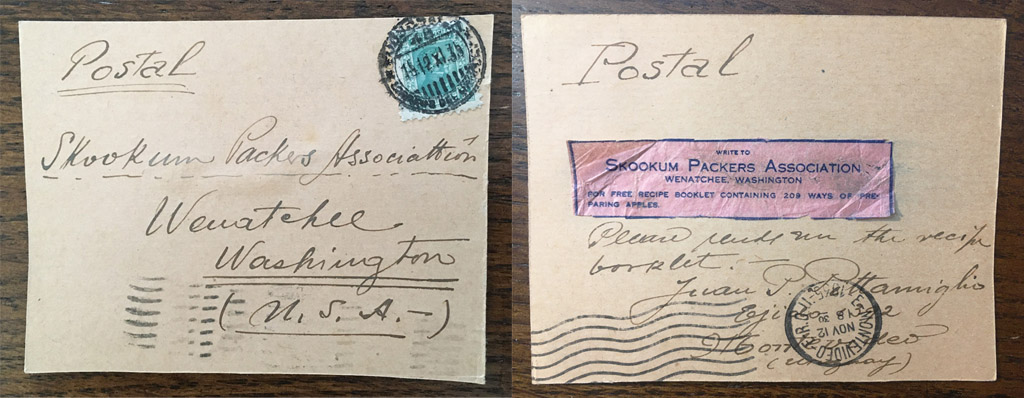
Communication by postcard is not a single event, but the result of a sequence of events. Thus the acquisition of a postmark and, perhaps, some incidental damage and wear, delineates the act of sending from the act of receiving, and differentiates the experiences of the sender and the receiver.
If the sender’s choice of a beautiful stamp becomes paired with a particularly dramatic and collectible postmark, the receiver will be the first, and usually only, one to know it. The sender sees only the fresh, uncancelled mailpiece, its stamps neither accented nor obliterated by a postmark, and its surface undamaged and unsmudged by the rubber rollers and sharp edges of high-speed postal machinery. Whether a sent mailpiece is transformed from prosaic to beautiful, or from beautiful to deformed, is simply not for the sender to know.
The stamp and the postmark are thus key components of the medium. The stamps, if foreign, reinforce the fact of physical separation of the sender and receiver. The postmark further confirms that the card, and thus the sender, were once indeed in this distant place. It also bears witness to a long postal journey involving anonymous persons, machines and other agents — third parties to the sender and receiver — whom we have enrolled to carry this message for us. It further reinforces the sense of distance by highlighting the fact that delivery of this message required the assistance of these actors, who have duly left the marks of their work.
This transformation via process, I think, is recognized in a somewhat more deliberate way in the creation of what is known as mail art. Mail artists are keenly aware of the importance of the marks, manipulations, and processes of mail handling, and their role in the realization and completion of their art.
In other words, every postcard or other mailpiece that acquires a stamp and a postmark is, in its own small way, a piece of mail art.
A story is a story
The presence of stamps and a postmark can even lend intrinsic value to an advertisement, by speaking of its journey. Below, if we look only at the card itself, the impression is that a public school employee might have been bothered by receiving an advertisement for a tobacco product. But the postmark establishes that it was sent in a time when receiving a cigar advertisement at a public school might have seemed less unseemly than it seems today. The Tampa, Florida postmark matches the location of the advertiser, indicating that the card was likely prepared and mailed by the company staff, instead of being jobbed out to some anonymous direct mailer in another state. The manually typewritten address says the same — this card was placed into a typewriter and rolled around the platen while a clerk dutifully typed, on company time. The pair of 1/2 cent stamps, while not particularly rare, prove that the mailer of these cards was constrained by the stamps on hand, and had to exert some clerical effort to affix them. It shows they had some skin in the game, at least.
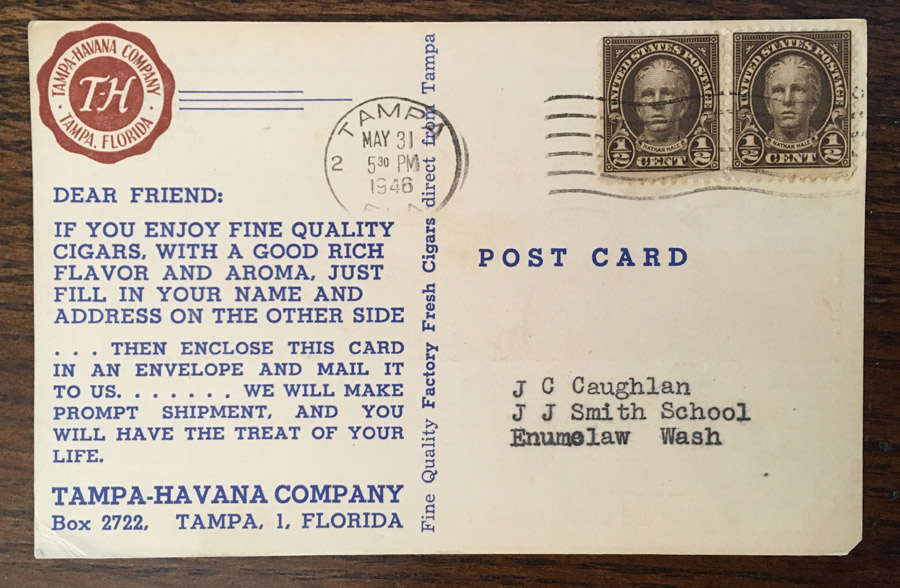
In comparison, today’s junk mail — being devoid of stamps, postal markings, or any other evidence of contact with human hands — only affirms that it is fired at us freely and indiscriminately, propelled by the probabilistic algorithms of shadowy marketing firms that barely know who they’re targeting, and encouraged by an underfunded postal service that is sorely dependent on the revenue. We are caught in the crossfire. If we are to be bombarded with unwanted, ineffective handbills, then let them at least carry evidence of the journey, as the card above does. Instead, we are left to shrug our shoulders and carry out the trash.
What fate, the stamp and postmark?
Even if the postcard hangs on, the stamp and postmark are gravely endangered. Without them, I’ll have a hard time thinking of a postcard as a postcard — and then, it might as well be game over.
Interestingly, both the stamp and the postmark were invented for their efficiency. Before 1837, when postage stamps (and central mail services) did not yet exist, postage fees would typically be calculated and paid on demand, either by the sender when the letter was accepted by the courier, or by the recipient when it was delivered. This is not a very efficient process. The postage stamp emerged as a rather ingenious way of ensuring that the service got its payment without the expense of processing it on demand. The letter could simply be dropped in a collection box with no intervention. Later, at the post office, the stamp would be examined and duly canceled.

But now, postal facilities in many nations are thoroughly networked with each other and with credit card payment systems and automated handling equipment. In comparison to the speed of digital processing, the process of examining and canceling a stamp is no longer an efficiency, but a burden. Increasingly, a customer who brings an unstamped letter or package to the postal clerk’s window will not be sold a stamp, but a freshly printed, self-adhesive paper label. And it will not receive a postmark at all, because the machines know that it doesn’t need one. We have gone almost full circle — back to on-demand payment of postage, and no postmark.
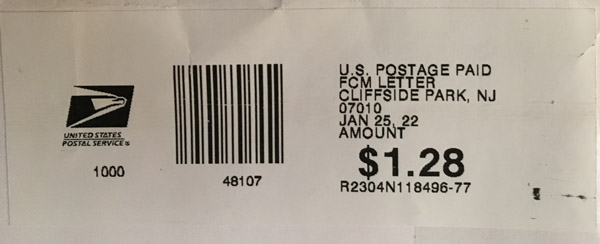
Already, these developments have presented a number of indignities to the postmarks that remain. In the U.S., no matter where a piece of mail is dropped into a collection box, it is almost always destined for a large, regional processing center, where every mailpiece will receive an identical postmark — not one from the town where it was mailed. Worse, the cancel is usually a “spray cancel”, which looks like it was laid down by a clogged inkjet printer. These postmarks may succeed at cancelling the stamp, but they are hard to love.
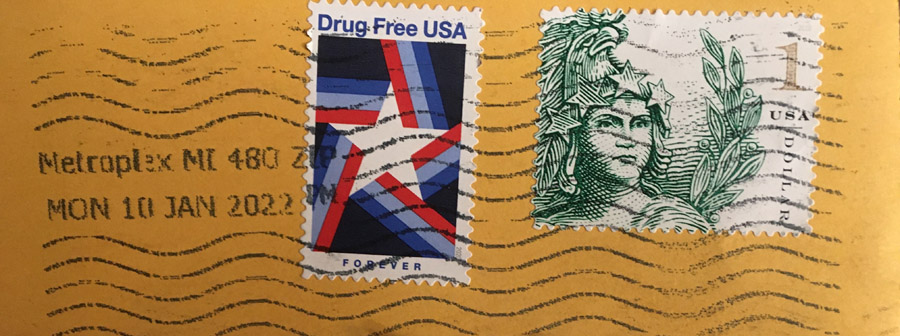
You don’t know what you got til it’s gone
To Posti’s credit, their marketing staff has recognized and reminded us of some of the nice things about the postcard. But does Posti know that if stamps and postmarks become obsolete, they won’t sell as many postcards? Perhaps this will not happen in Finland. But already, the postal service of Denmark no longer delivers cards or letters at all.
The endangered picture postcard is one example of why we should always strive to remain aware of the hidden functions of the technologies we take for granted. Whether we are aware of them or not, they often perform important and useful services whose importance might only become apparent through their absence. When they finally do become absent, we may also find that newer technologies are not equipped to replace them — and it may be too late to change our minds about it.
It’s no wonder that so many are so uncomfortable about the prospect that the postcard, and perhaps postal mail itself, seem poised to wither away.
To me, the lingering appreciation of snail mail, and of the postcard in particular, represents an unconscious appreciation of what the international postal system really is: a daily demonstration that, despite our social, ideological and cultural differences, human society has found a way to cooperatively route these anonymous packets of information, reliably and without prejudice, across state and international boundaries.
The survival of the global mail system is therefore nothing less than the survival of perhaps the best and most convincing evidence that humanity possesses the capacity to sustainably manage its affairs.
If we can organize ourselves to such greater good for the purpose of exchanging snippets of paper, then why not for everything else?
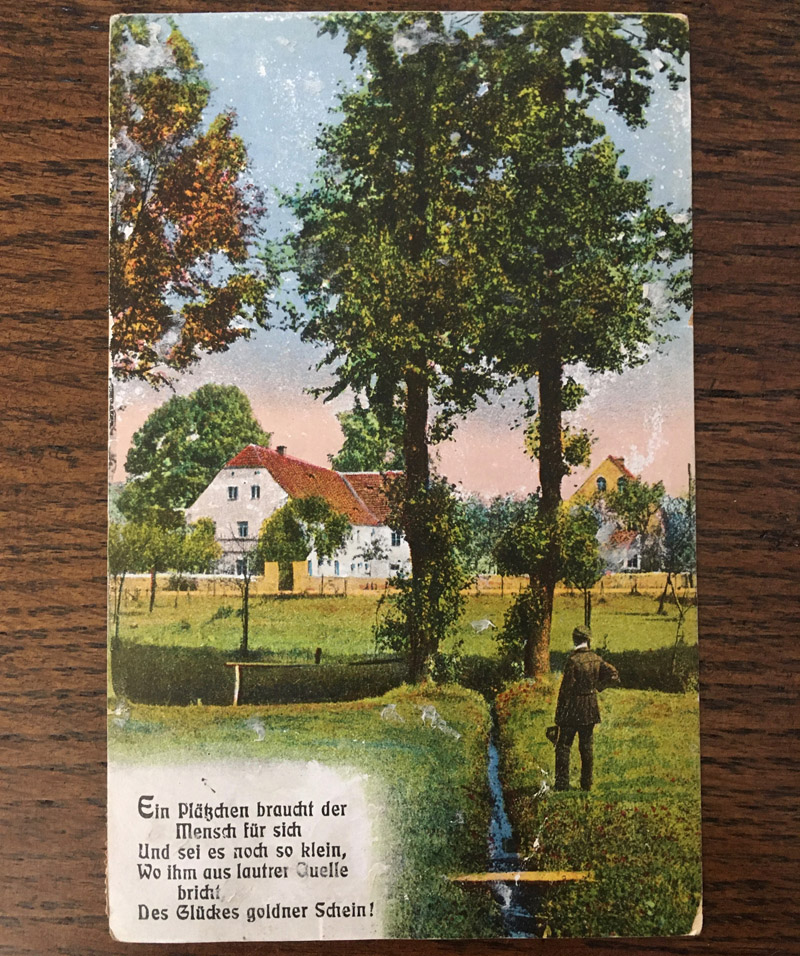
Article and photos Copyright 2022 by the author.
